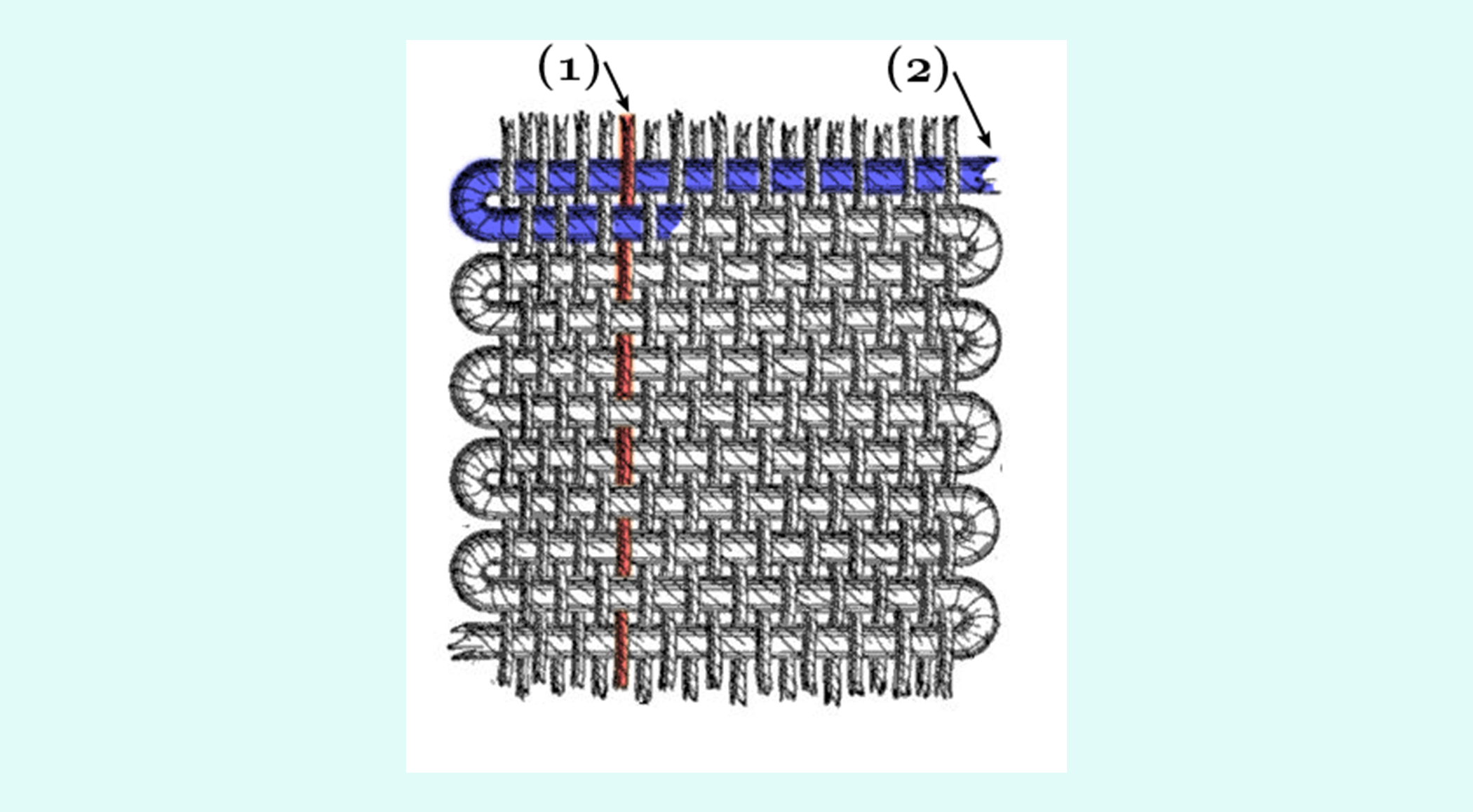en
- de
- en
The protagonist of the project "CulturalxCollabs. Weaving the Future" is a modern interpretation of a 17th century Caucasian dragon from the Berlin collection. This doppelgänger is a donation from Rug Star by Jürgen Dahlmanns. Dahlmann's interpretation specifically takes into account the state of preservation of the antique rug. In order not to create a copy, but to allow a dialogue between the two carpets, it is mirrored. Dahlmanns skillfully preserves the original state while embracing imperfections through use of colored wool and white silk in this rewoven carpet. He highlights the color changes that have occurred over centuries. A woven-in grid of 10 x 10 rectangles overlays the actual pattern. It integrates the concept of 100 fragments by marking intersecting lines. His design was produced to scale in 2022 by weavers in Rajasthan, India. Learn more about the structure and material of the newly woven carpet double here.
Both Carpets in the exhibition
The Caucasian Dragon-Carpet and its new interpretation in the exhibition at the Museum für Islamische Kunst im Pergamonmuseum in August/September 2023
Who invented it?
Design:
Jürgen Dahlmanns, owner and creative mind behind Rug Star by Jürgen Dahlmanns, designed the doppelganger carpet specifically for this project. His concept makes direct reference to the history of the original carpet and to its future.
Manufacturing:
The carpet was hand-woven in a small factory - a two-hour drive from Rajasthan, India.
Donation:
After completion, the carpet was donated by Jürgen Dahlmanns to the association "Freunde des Museums für Islamische Kunst im Pergamonmuseum e. V.".
Size of the Carpet
The carpet is 265 cm wide and 610 cm long.
Other measurement units: 104 x 240 inch
8.69 x 20 feet
All four edges of the rug are trimmed and then stiched to create a uniform rectangular format. As a result, there are no original edges, i.e. fringes at the top and bottom or selvages on the sides.
Technical Description
Warp: cotton, polyester, white, Z 8 S
Weft: cotton, polyester
1st weft: white (straight) Z 20 S
2nd weft: gray (wavy) Z 5 S
Knot: asymmetrical
silk 65%, Z 14 S, white
wool 35%, Z, 22 colors
COMPONENTS OF A CARPET: Warp and weft
Warp and weft create the basic fabric of the carpet. For both components a mixture of cotton and polyester fibers is used to give it a certain strength. The thickness of warp and weft is different according to their function. The warp – the vertical threads on which particularly much tension are exerted during weaving, is of medium thickness. Of the two wefts used here, one is particularly thick. It gives the basic weave its thickness. The second, gray weft is much thinner. It binds the warps close together. Adding knots between the wefts makes a plain weave a carpet.
Knot
Asymmetric: V 38, H 38 = 1444qdm
V(ertical) 38 knots, H(orizontal) 38 per 10 cm = 1444 sqdm
The carpet is woven with asymmetrical knots which means the two ends of the pile show up between different warps. Due to the handwork, the number of knots in the vertical axis varies very often within a carpet. The knot count is therefore a guideline.
THE YARN
The letters Z and S in the technical specifications indicate the direction in which the fibers are spun and the yarns are twisted. The description always starts inside the thread according to the manufacturing sequence. The digit indicates the number of threads used.
E.G:
Z 20 S = fibers are spun into a thread in Z direction - 20 of these threads are spun into a thread twisted in S direction.
Material
Two different materials are chosen for the knots that form the pile of the carpet. The white areas are made of silk. They correspond to the destroyed areas of the dragon carpet, which served as a template for this design. The pile height is approximately 5 mm. The colored areas, as well as the white vertical and horizontal lines forming the grid are made of wool. Just like in the burnt carpet, the pile height is very low, only 1-2 mm.
Colors
22 colors were used for the carpet pattern. Several shades of beige, green, red and blue dominate the palette.
The Graph
In today's carpet production there are exact weaving templates, so called graphs. Each single knot is shown as a colored square. The graph for this carpet specifies the number of knots as 9/9 per inch. So 9 squares/knots vertically and 9 squares/knots horizontally per inch. In international carpet research and in museums today, the information knot ratio is mostly given in centimeters.
Weight
51 kg
112 pounds
Which equals 3,2 kg or 7 pounds per square meter.
The weight of a carpet is mostly determined by the material used and the knot count. Cotton is heavier than wool and a higher knot count requires more material creating a dense pile. In this carpet the combination of cotton and a medium to low knot count reveals an average weight.
Learn more about the project
Weaving the Future
Join us on a journey with 100 carpet fragments as they travel around the world for three and a half years, finding temporary homes while bridging cultural boundaries, fostering worldwide community united by the power of human stories.
Where is the Dragon?
The star of the "CulturalxCollabs - Weaving the Future" project is a so-called Caucasian dragon carpet from the 17th century. A dragon carpet - all well and good - but: where is the dragon?
Fragment Journeys
100 carpet fragments part of the "CulturalxCollabs - Weaving the Future" project. Follow their journeys through the ever changing owners' over three and a half years.









